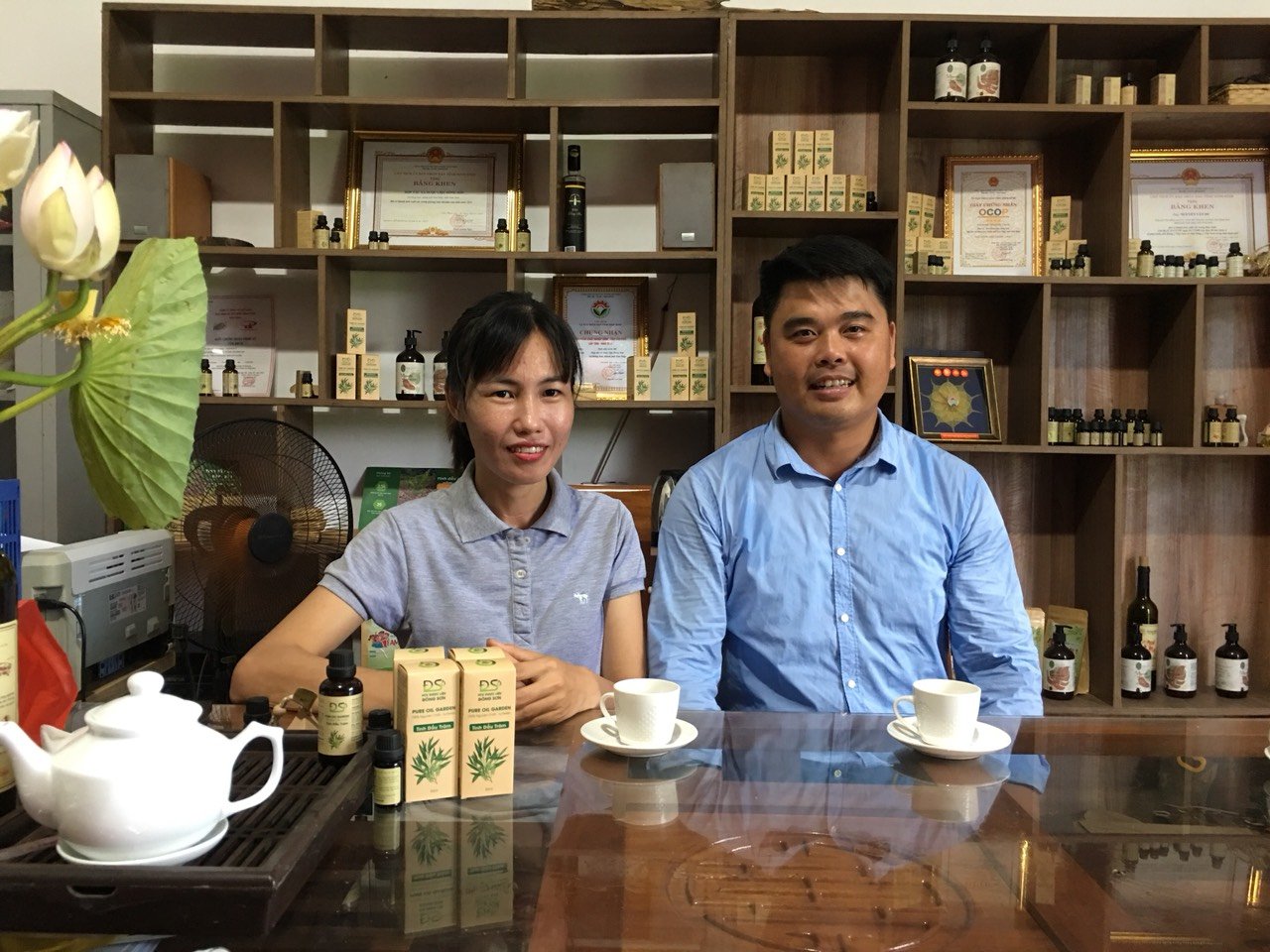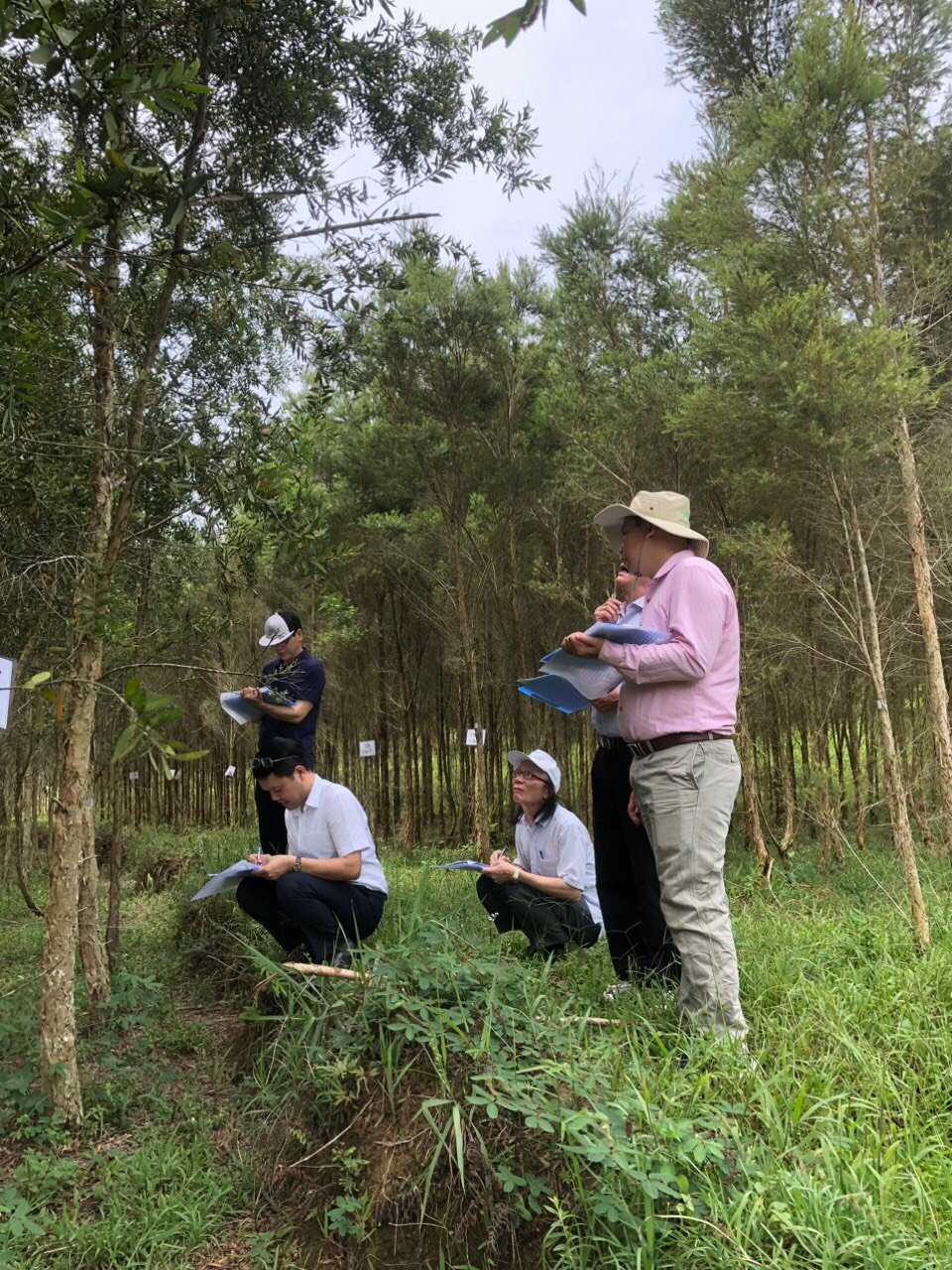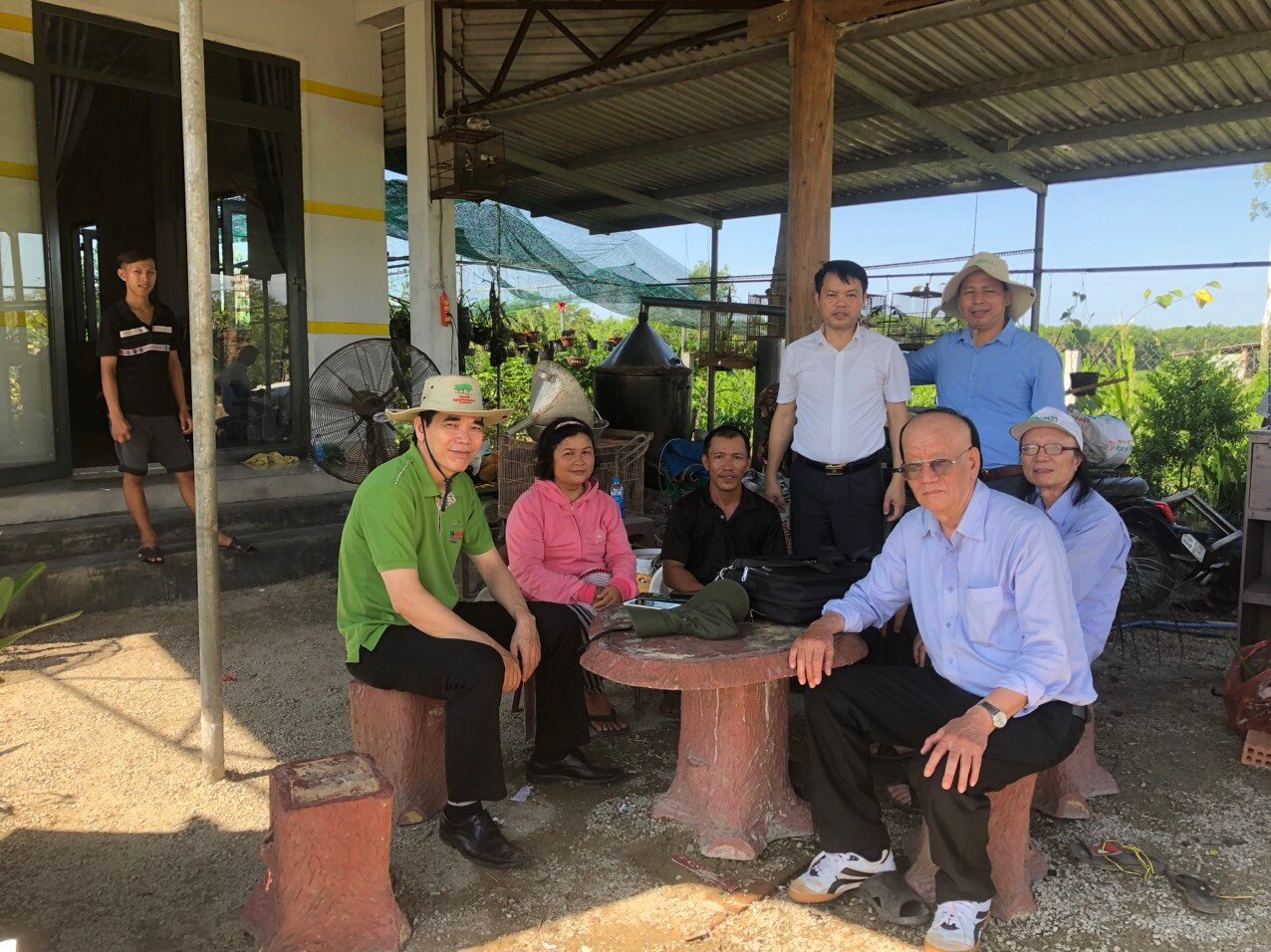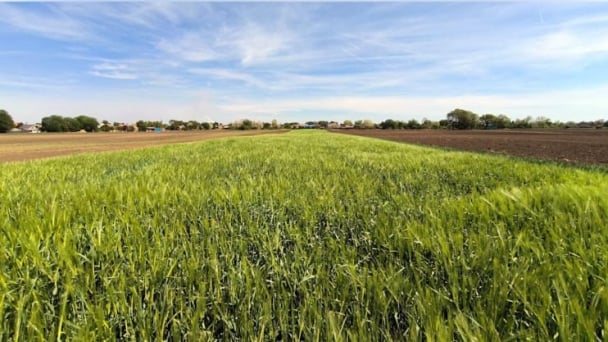June 23, 2025 | 09:10 GMT +7
June 23, 2025 | 09:10 GMT +7
Hotline: 0913.378.918
June 23, 2025 | 09:10 GMT +7
Hotline: 0913.378.918
I recently had the opportunity to go on a reality trip with the assessment delegation of the Ministry of Agriculture and Rural Development (MARD) in the three provinces of Hoa Binh, Ninh Binh and Quang Nam. The delegation comes to inspect and recognize the expansion of new planting areas of two medicinal plant varieties for essential oils, narrow-leaved paperbark (Melaleuca alternifolia) and five - veined paperbark (Melaleuca quinquenervia).
Leading the delegation during the field assessment days was a young man named Du, a researcher of the Institute for Seed Improvement and Rural Development. Du passionately told us about the new varieties chosen for the trials, about each variety’s yield and quality of the essential oils. He also provided us with information about the demand and price of each essential oil in the domestic and international markets.

Du and his wife, the directors of Dong Son Medical Cooperative, at the product showroom.
When we came to Tam Diep city (Ninh Binh province), heavy rain was on its way. Du led us to the orchard, which is a trial planting model of narrow-leaved paperbark nestled among the farms with thousands of ornamental peach trees. We quickly took measurements at the scene and then visited Dong Son Medical Cooperative.
A young woman greeted us at the distillery and processing workshop of paperbark essential oil products. According to her information, the cooperative is producing essential oils distilled from the branches and leaves of narrow-leaved paperbark and five - veined paperbark. In addition to paperbark essential oil products, her cooperative also manufactures melaleuca-scented shampoo and soap. All products of the cooperative are tested to ensure that they meet the National Standards. The cooperative's products have been granted a 4-star OCOP product certificate by the Ninh Binh Provincial People's Committee.
Talking about the start-up story, the director of the essential oil cooperative said she previously worked as an accountant in Hanoi, earning a fairly stable income. But in 2020 she decided to leave Hanoi to go back to her hometown and helped her husband manage the new Medical cooperative he established. As she was telling the story, her eyes were at the young man in our group. Interestingly, her husband - the director of Dong Son Medical Cooperative was actually the researcher who led our delegation during the past few days.

The MARD delegation went to inspect and evaluate several varieties of paperbark in order to recognize the expansion of the new planting areas.
The couple currently develops over 9 ha of five-veined paperbark, and Du aims to soon expand the narrow-leaved paperbark area because the essential oil of this tree has a higher value and is favored by the world market. They hope to expand the melaleuca growing area to 50-60 ha in the future, and after that comes the upgrade for the workshops.
After showing us the essential oil distillation and production lines, D took us to the back of the workshop. He pointed to the pile of melaleuca leaves that were removed after distillation and said, “it is the final product of the cooperative. All of these leaves will be processed into fertilizer to supply the market”.
He revealed that narrow-leaved paperbark and five-veined paperbark only need to be planted once but can be harvested continuously for 25 years. All parts of the plant can be used, from the trunk, branches to the leaves. Nothing is left out.
If the market is stable, income from melaleuca growing will be much higher than from rice on the same area. Therefore, many households in his hometown have come to the cooperative and asked for Du and his wife’s help to switch from rice production to melaleuca growing. They hope to provide raw materials for the cooperative.

The MARD assessment delegation visited the Thao Nguyen essential oil production facility in Que My commune, Que Son district, Quang Nam province.
Narrow-leaved paperbark (Melaleuca alternifolia) and five - veined paperbark (Melaleuca quinquenervia) are two species of imported forest trees that have a fairly wide ecological range. They have high adaptability and grow well on arid sandy soils in Que Son district (Quang Nam province), but also grow well on the foothills of rice fields in low-lying valleys in Tan Lac district (Hoa Binh province) or on fertile hilly soil in Tam Diep region (Ninh Binh province).
Translated by Samuel Pham
![Turning wind and rain into action: [9] Digitizing hydrometeorological data in response to climate change](https://t.ex-cdn.com/nongnghiepmoitruong.vn/608w/files/news/2025/06/17/z6704423696987_15fd32ffc26d590d204d520c9dac6786-nongnghiep-165943.jpg)
(VAN) Farmers have begun accessing hydrometeorological applications to adjust their cropping schedules, aiming to ensure productivity and adapt to climate change.
![Turning wind and rain into action: [8] Real-time salinity detection and early warning technology](https://t.ex-cdn.com/nongnghiepmoitruong.vn/608w/files/news/2025/06/17/z6704423696987_15fd32ffc26d590d204d520c9dac6786-nongnghiep-151127.jpg)
(VAN) Thanks to the integration of modern hydrological-hydraulic models, remote sensing technologies, and artificial intelligence, the accuracy of hydrological forecasting has significantly improved.
![Turning wind and rain into action: [7] Early disaster warnings help marine farmers minimize losses](https://t.ex-cdn.com/nongnghiepmoitruong.vn/608w/files/news/2025/06/17/z6704423696987_15fd32ffc26d590d204d520c9dac6786-nongnghiep-142942.jpg)
(VAN) In recent years, thanks to early disaster warnings and forecasting, marine farmers in Khanh Hoa province have been able to reduce risks and losses, thereby improving production efficiency.
![Turning wind and rain into action: [6] ‘Four on-the-spot’ disaster management software](https://t.ex-cdn.com/nongnghiepmoitruong.vn/608w/files/news/2025/06/17/e5a48259d6a262fc3bb3-nongnghiep-183800.jpg)
(VAN) By simply activating the scenario on the disaster management software, the relevant authorities immediately know how many households need to be evacuated, where to evacuate them to, and by what means of transportation…
![Turning wind and rain into action: [5] Hue applies modern technology in disaster forecasting](https://t.ex-cdn.com/nongnghiepmoitruong.vn/608w/files/news/2025/06/17/z6704423696987_15fd32ffc26d590d204d520c9dac6786-nongnghiep-093938.jpg)
(VAN) In Hue city, modern technology has recently been applied in meteorological and hydrological forecasting and warning, helping to reduce the damage caused by natural disasters.

(VAN) A cutting-edge farming technique being implemented on an experimental ranch in Arizona's Sonoran Desert has already saved a billion gallons of water over five years, according to Civil Eats.

(VAN) Poultry and pig production and the environment can be boosted through enhanced water technology, according to new research.